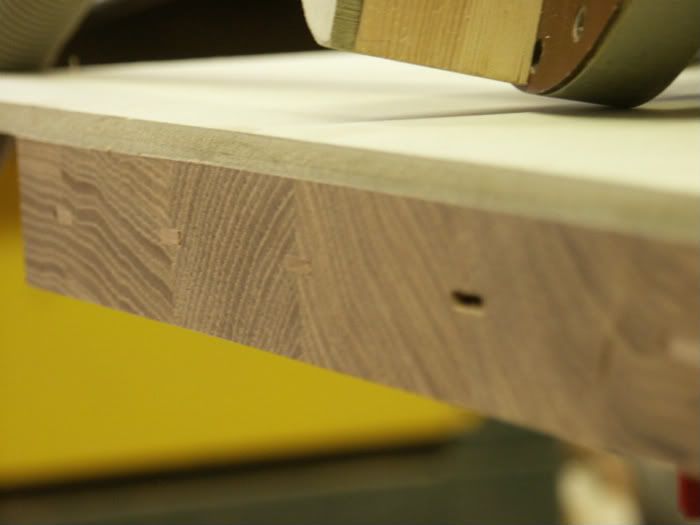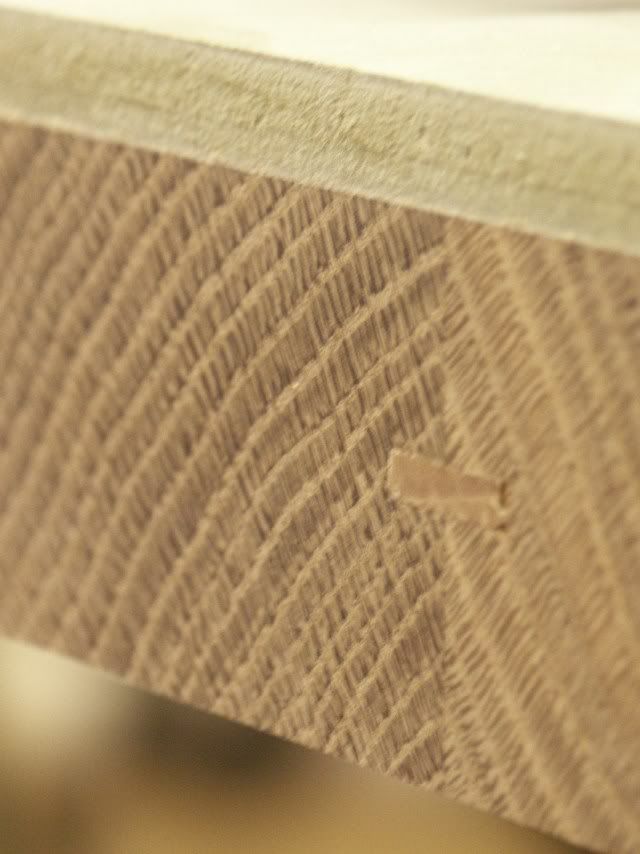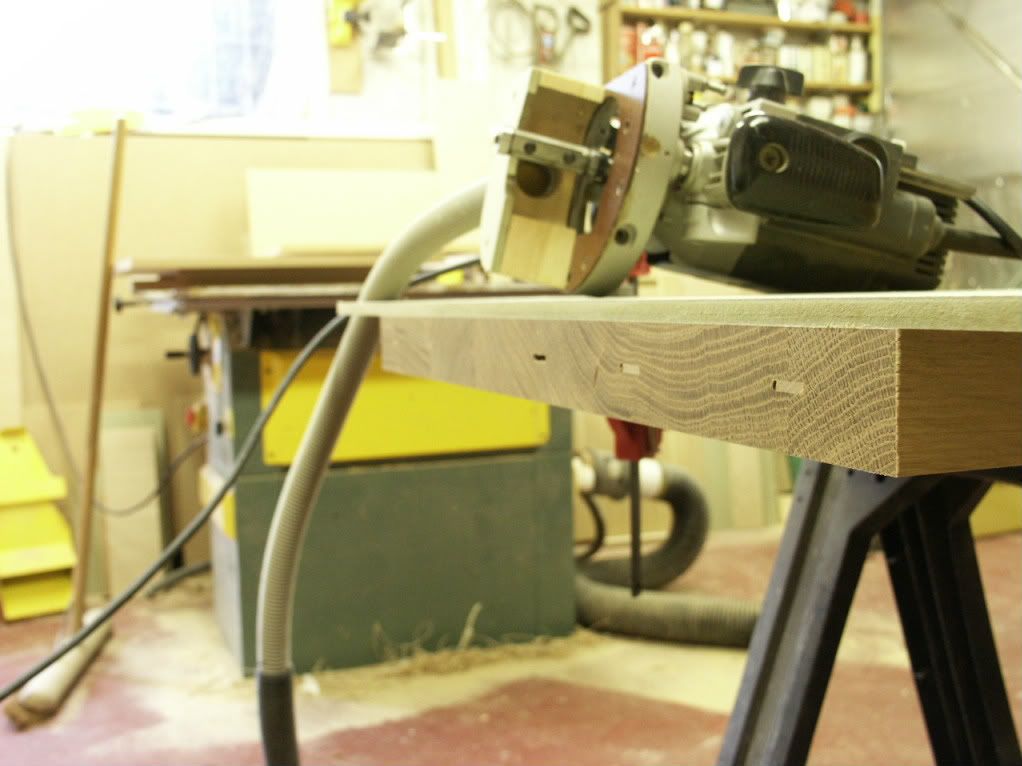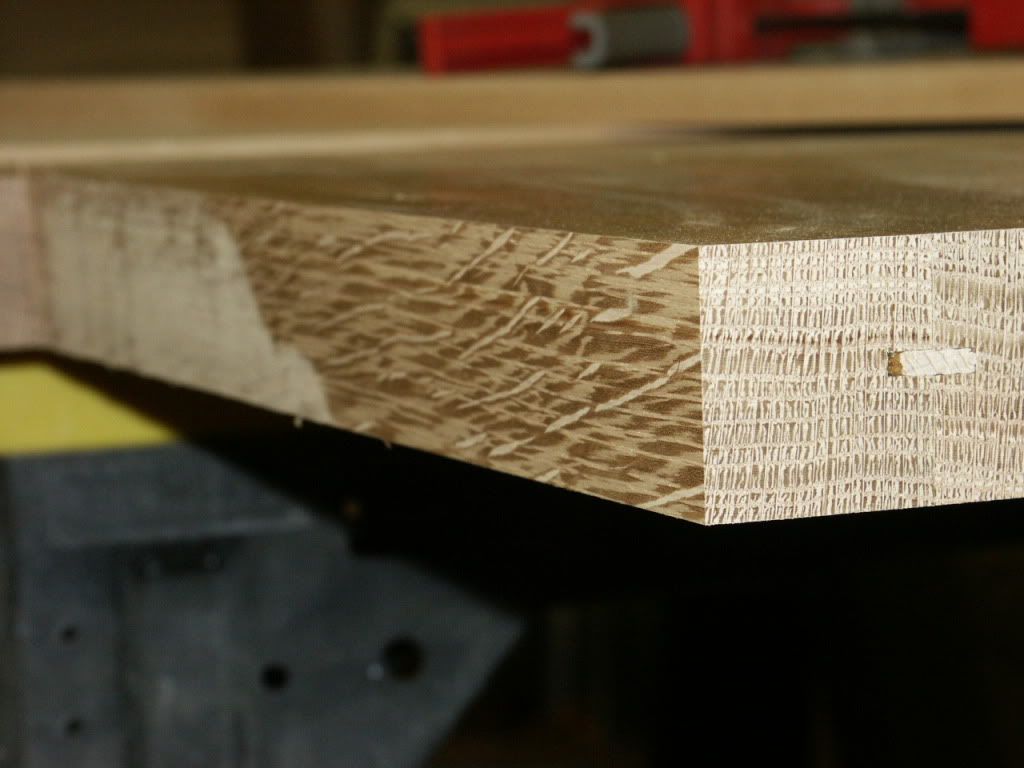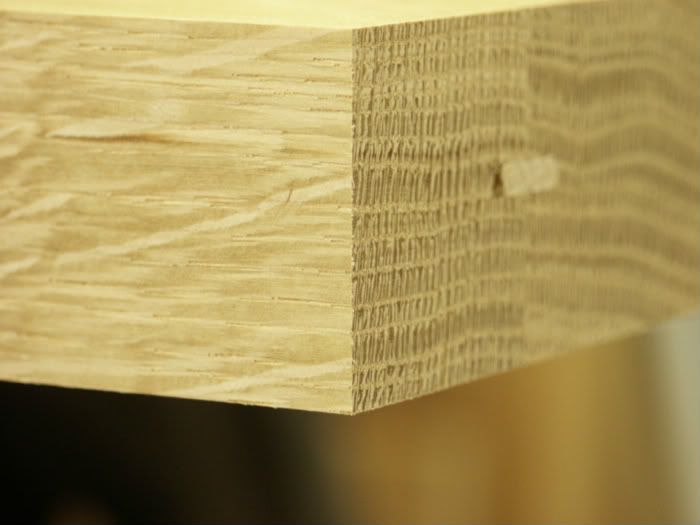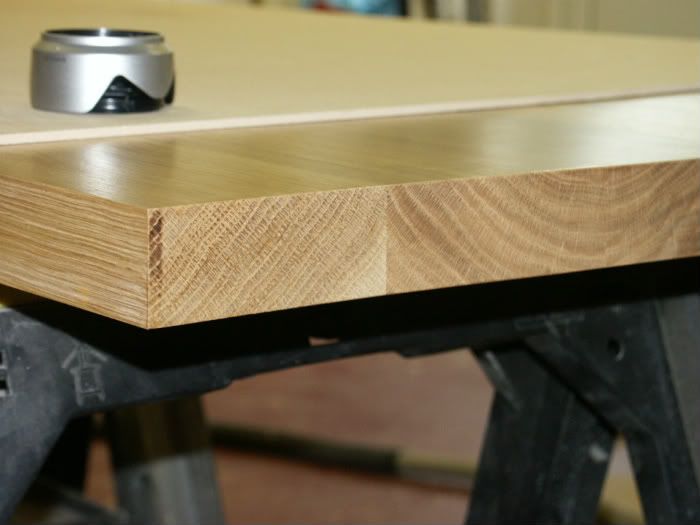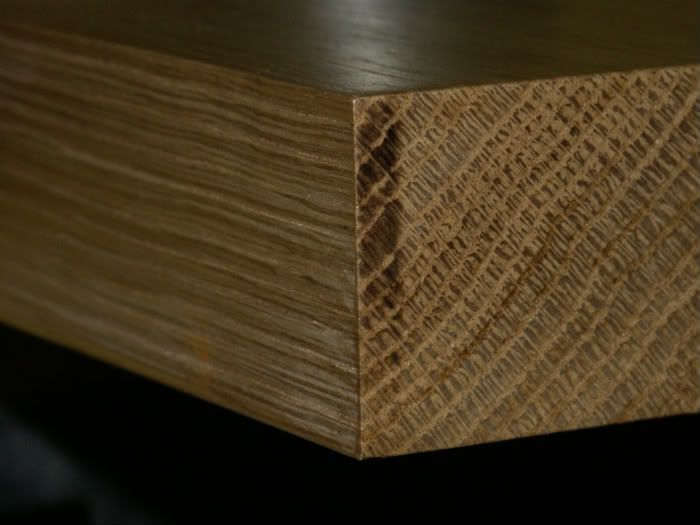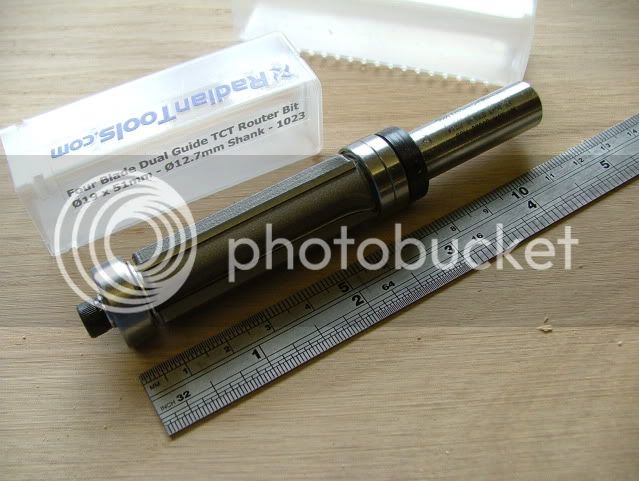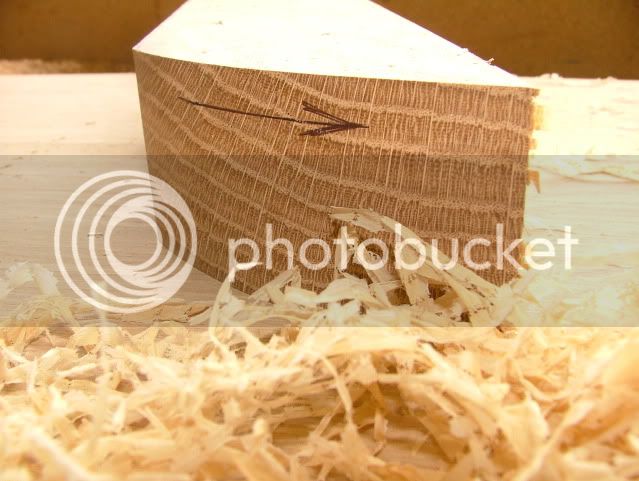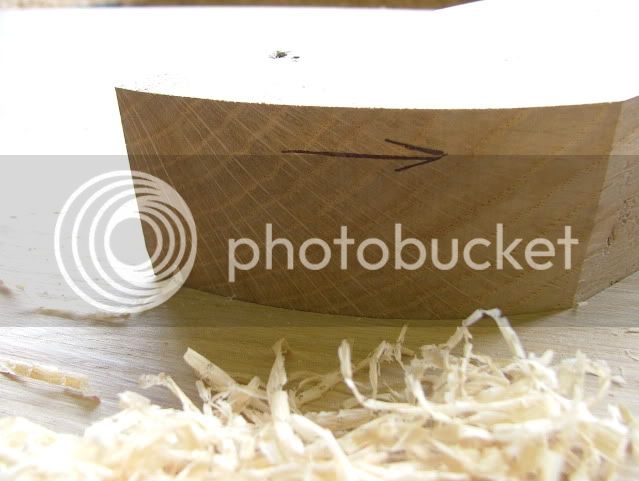As we are unlikely to get a full back to back test between brand new 4 flute, 2 flute and 2 flute replaceable tip cutters on the same piece of wood to enable members to get a comparison between finishes (as best a photo can show) between the various types I have taken these photos today. Hopefully Dodge can do something similar which will enable members to make a more informed opinion when they come to purchase a cutter.
Material : 43mm thick American white oak
Depth of cut : 2-3mm, I feel this is more representative of actual use than the 1mm shown on the 4 flute site as thats typically how far you would cut from a line before trimming.
Feed rate : Approx 4ft/min
Cutter : Wealdon 15x50 “Easi-tip” multitrim with slightly used cutters
Router : Good old Elu MOF-177E
These photos show an endgrain cut, no sign of scorching and no tear out on the lower edge, none on the top either but the offcut of MDF used as a straightedge would hide it if it were.
And a wider shot showing that it was taken in raking light from the window opposite and there are no signs of scalloping
The next show cuts with the grain, again no signs of scalloping, tearout or burning
And to illustrate my comment that scorching shown on the site is more likely to be caused by a blunt cutter than one with 2, 3 or 4 flutes here is the other end of the same worktop. I trimmed this a couple of days ago, picked up the bit which I had previously been using on MR MDF with walnut bandsawn veneers both sides and also some oak veneered MDF, as soon as I started cutting I could feel myself using more effort than I should. Changed tips and it cut like butter, the pics below show that scorching in the first couple of mm of the cut.
This end has been lightly sanded to 180g from the routed cut by hand and given 3 coats of Smith & Rogers rather nice Matt Aquacote, long grain is straight from the thicknesser
I look forward to seeing if Dodge finds a significantly better finish.
Jason





